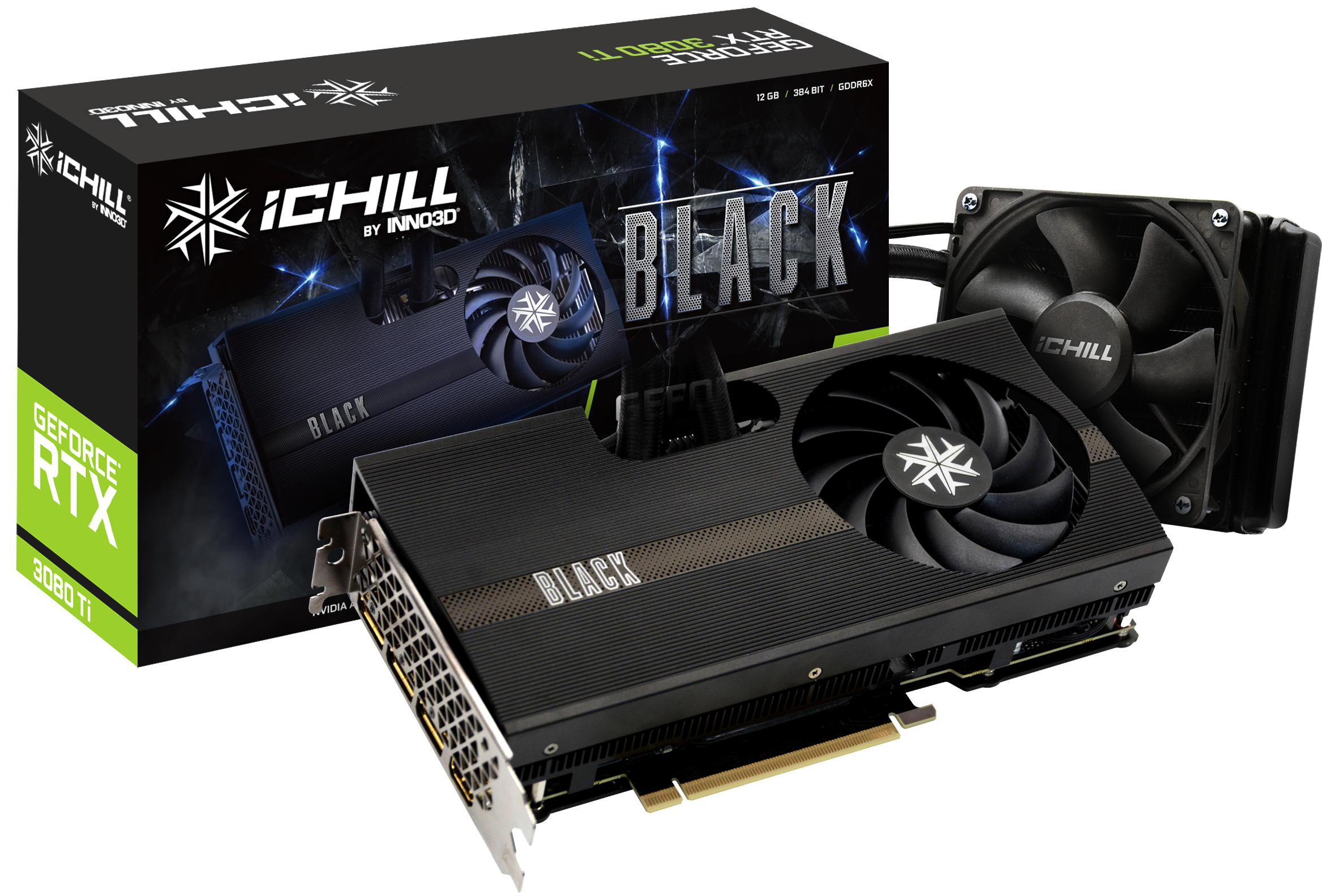INNO3D Launches iChill Black RTX 3080, 3080 Ti Graphics Cards
Plug and play hybrid cooling.
INNO3D today extended its Nvidia RTX line-up with the addition of two solutions packed to the gills with built-in watercoooling. The INNO3D RTX 3080 and RTX 3080 Ti iChill Black have been built on a hybrid cooling philosophy, which pairs a watercooling block that keeps the GA102 chips inside these high-performance graphics cards cool. A single 90mm fan is in charge of keeping the high-wattage GDDR6X memory subsystem under temperature control. A dual-heatpipe system is responsible for moving the heat produced from the memory chips through to the heatsink array. Stylistically, the cards are painted in an unsurprising black throughout - including the backplate.




When it comes to specifications, INNO3D has kept Boost clocks at a relatively mainstream level, with the IChill Black RTX 3080 Ti ticking at 1710 MHz Boost clocks (a 45 MHz increase over NVIDIA reference), while the iChill Black RTX 3080 ticks at 1770 MHz (a 60 MHz increase from the reference 1710 MHz). Memory configuration is par for the course - 12 GB GDDR6X at 19 Gbps over a 384-bit bus for the RTX 3080 Ti, and 10 GB GDDR6X at the same 19 GBps rate over a 320-bit bus. In terms of I/O, we're looking at the standard 3x DisplayPort 1.4a and 1x HDMI 2.1 outputs we typically see in cards of this category.
A hybrid cooling design tries to hit a perfect balance between cooling performance, noise, and cost. INNO3D's iChill Black graphics cards ship with a 120 mm radiator + fan combo, responsible for keeping the GA102 chips cool enough so as not to compromise performance - remember that NVIDIA's Boost technology looks not only at power consumption, but also thermals, in order to unlock as much performance as possible.

INNO3D is quick to point out the thermal and acoustic efficiency of their design: the company claims maximum temperatures of 68 Celsius (GPU), 77 Celsius (GDDR6X) and 82 Celsius (VRM circuitry) at 28 dB of noise. However, the company uses the same graphics and temperature points for both the RTX 3080 and RTX 3080 Ti, which is odd as these chips definitely aren't made equal when it comes to their power consumption, operating frequencies, and power profiles.
Get Tom's Hardware's best news and in-depth reviews, straight to your inbox.

Francisco Pires is a freelance news writer for Tom's Hardware with a soft side for quantum computing.
-
spentshells How nice, they spent at least 1.35 USD making that shroud for a $1500 dollar card.Reply